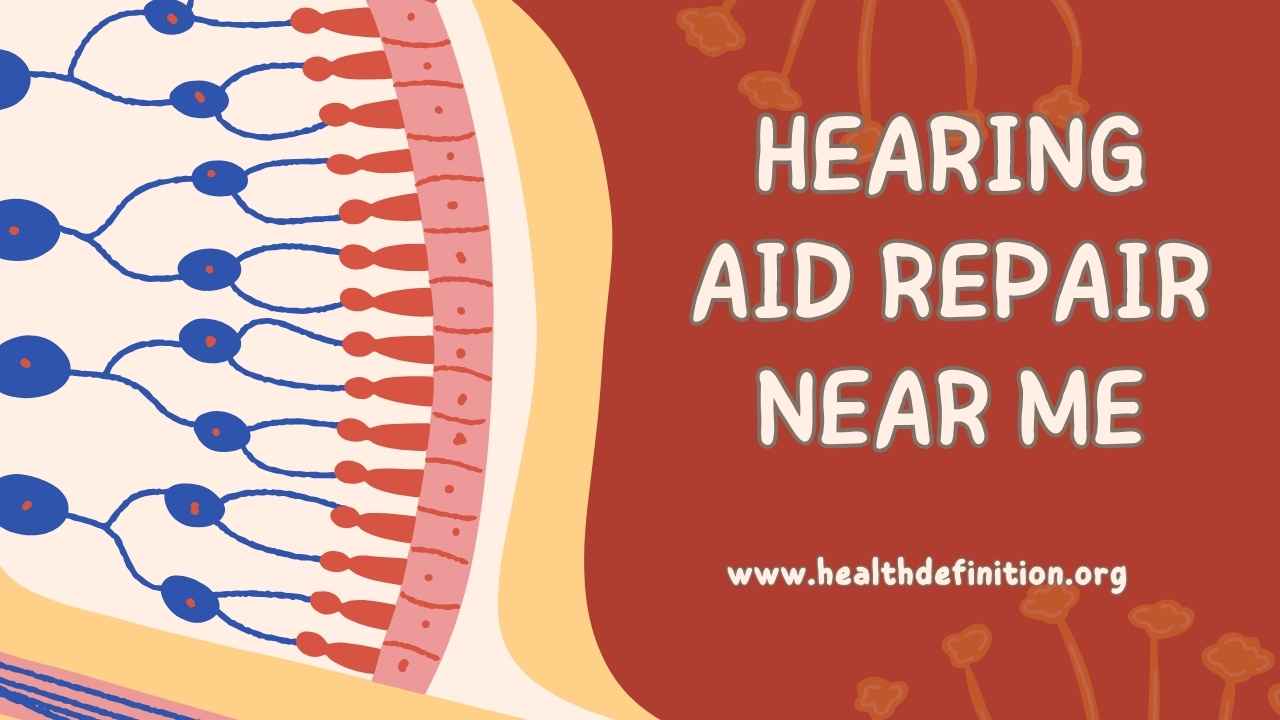
For anyone who relies on hearing aid repair, it’s more than just a piece of technology—it’s a lifeline to the world of sound. Like any device, it can occasionally break down or perform poorly due to wear and tear, moisture damage, or battery issues. When that happens, the first thought that comes to mind is: “Where can I find reliable hearing aid repair near me?”
In this article, we’ll explore the importance of timely hearing aid repairs, what common problems to look out for, how to choose the right repair service near you, and tips to extend the life of your device. Whether you wear your hearing aids daily or occasionally, this guide will help ensure they stay in optimal working condition.
Why Hearing Aid Repair Is So Important
Hearing aids are small but sophisticated devices that play a crucial role in improving communication, safety, and overall quality of life. When they malfunction, even slightly, it can cause frustration and isolation. That’s why timely repairs are essential — not just to restore sound but to maintain your well-being.

Common Hearing Aid Problems
If you’re experiencing any of the following issues, you likely need professional repair:
-
No sound or distorted sound
-
Whistling or feedback noises
-
Sudden volume changes
-
The device won’t turn on
-
Physical damage (cracks, broken tubing, etc.)
-
Moisture damage or corrosion
Most problems can be resolved quickly if addressed early. Delaying repairs can cause further damage and increase the cost of fixing your hearing aids later.
How to Find a Trustworthy Hearing Aid Repair Service Near You
When searching “hearing aid repair near me,” you might be overwhelmed by the number of local options. To narrow it down, here are the key things to consider:
1. Reputation and Reviews
Start by checking online reviews and ratings on Google, Yelp, or the Better Business Bureau. A business with consistently positive feedback is more likely to provide quality service.
2. Certified Professionals
Choose repair centers staffed by licensed audiologists or certified hearing instrument specialists. These professionals are trained to handle delicate repairs and can also reprogram your device if needed.
3. Turnaround Time
Ask how long repairs typically take. Some providers offer same-day repairs, while others may need to send the device to the manufacturer, taking a few days to a week.
4. Warranty and Guarantees
Find out if the repair is covered under your existing warranty. Reputable centers often provide warranties on their repair work as well.
5. Walk-in or Mobile Services
Some local providers offer mobile hearing aid repair services, where a technician comes to your home. This is a great option for seniors or those with mobility issues.
6. Pricing Transparency
Look for a provider that offers clear, upfront pricing. Some common repairs, like wax guard replacements or tube adjustments, may cost less than major internal repairs.
What to Expect During a Hearing Aid Repair Appointment
When you bring your device in for repair, the technician will typically:
-
Inspect the device externally for visible damage or blockage.
-
Use diagnostic equipment to test internal components.
-
Clean the device thoroughly, including microphones, receivers, and tubing.
-
Replace parts if necessary (e.g., tubing, wax filters, microphones).
-
Test the device for sound clarity and volume levels before returning it to you.
Some repairs can be completed on the spot, while others may require shipping the device back to the manufacturer, especially if it’s still under warranty.

DIY Fixes vs. Professional Repairs
While it’s tempting to try fixing a hearing aid yourself, it’s important to know when to stop and call a professional.
DIY Maintenance You Can Do:
-
Change the batteries regularly
-
Clean wax guards and tubing
-
Use a dehumidifier overnight
-
Brush microphones and receivers gently
However, never attempt to open the hearing aid casing or replace internal parts yourself. You could cause more damage and void your warranty.
How Much Does Hearing Aid Repair Cost?
The hearing aid repair cost depends on the issue’s severity and whether the device is under warranty. Here’s a rough breakdown:
| Repair Type | Estimated Cost Range |
|---|---|
| Basic cleaning/tune-up | $25 – $50 |
| Tubing or dome replacement | $30 – $75 |
| Microphone/receiver repair | $75 – $150 |
| Major internal repair | $150 – $300 |
| Manufacturer repair (out of warranty) | $200 – $500 |
If your device is out of warranty, some providers offer refurbished hearing aids or trade-in options that could be more cost-effective.
Local vs. Manufacturer Repair Services
You may be wondering: Should I visit a local repair shop or send my to the manufacturer?
Local Repair Shop Advantages:
-
Faster service
-
Personalized support
-
Easy follow-up if the issue returns
Manufacturer Repairs:
-
Better for complex repairs
-
Ideal for devices still under warranty
-
Access to brand-specific parts and software
In many cases, local providers will evaluate your device first and advise whether it needs to be sent back to the manufacturer.
Preventing the Need for Repairs
Here are a few proactive tips to help reduce the frequency of hearing aid repairs:
-
Keep your hearing aids dry – Moisture is the enemy of electronics. Use a dehumidifier case overnight.
-
Clean your devices daily – Remove wax and dust using a soft brush or specialized tools.
-
Avoid dropping them – Handle them over soft surfaces when changing batteries.
-
Store them safely – Keep your hearing aids in a case when not in use, away from pets and children.
-
Schedule regular checkups – Visit your hearing care professional every 6-12 months for maintenance.

Final Thoughts
Your hearing aids are an investment in your quality of life. Finding a reliable hearing aid repair near you can restore your connection to the world around you quickly and affordably when something goes wrong. Whether it’s a quick fix or a more involved repair, the key is acting fast and choosing a trusted local provider.
Don’t let a malfunctioning device keep you from enjoying the sounds of life. Search for expert hearing aid repair near you today and take the first step toward clearer hearing and greater peace of mind.






